Graphic Organisers for Teachers
The blank graphic organisers and printable graphic organiser templates you need most for your primary school classroom are here! Help your students learn to brainstorm ideas and organise information with editable templates you can customise for your classroom.
Carefully designed and curated by our expert teacher team, each of the maps, charts and diagrams in this collection of templates has been created with the needs of students in mind. Many are even already aligned to the Australian curriculum to save you much-needed time in your lesson planning.
You'll find:
- Printable Venn Diagram templates
- T-charts
- KWLs
- Story maps
- Concept diagrams
- Concept maps
- Knowledge maps
- Cognitive organisers
- Advance organisers
- Brainstorming templates
Not familiar with this teaching tool, or just looking for some fresh ideas for using them in the classroom? Read on for a primer from our teacher team!
What Is a Graphic Organiser?
A graphic organiser, by definition, is a visual guide that breaks down the relationships between ideas, vocabulary or facts within a learning task. These learning tools scaffold learning for students, allowing them literally construct knowledge. Pretty neat, huh?
Graphic organisers can take the form of templates, charts, or diagrams and be specific to one topic or generalised for use across a range of subjects.
Printing blank templates allows students to use the tool to design their learning, explore relationships between concepts and use their evaluation and judgment skills to determine where information should be added to the organiser.
Types of Graphic Organiser Examples
So what are the different types of graphic organisers in this collection? Let's take a look at some examples and how to use them!
Concept Maps
The term 'map' for this graphic organiser refers to the fact that it shares some similarities with a traditional map.
A map of a country or state can visually represent the geographic layout of different places and their relationships. Similarly, a concept map visually represents the connections and relationships between various ideas or concepts. This helps students organise their thoughts and understand the relationships between different topics, as well as helping kids understand the overall structure of a topic.
Venn Diagrams
A Venn diagram is used to show the logical relationships between two or more sets of items. This tool is named for John Venn, a mathematician, logician and philosopher known for his work in probability.
Although a classic Venn diagram is made up of overlapping circles, other shapes can be used with this graphic organisation tool. And while a Venn Diagram is often made up of just two or three circles, some forms can encompass larger numbers of shapes.
Especially useful in maths and English classes, a Venn diagram can help students easily analyse similarities and differences between characters, objects or concepts. For example, a student might use a Venn diagram in maths to sort and classify numbers or geometric shapes.
Story Maps
A story map is a graphic organiser that can help English students understand the elements of a story — concepts such as characters, setting, plot and resolution.
This helpful tool gives kids a visual outline of the story's structure and helps students identify key elements and their relationships, plus it helps them track plot progression.
KWL Charts
KWL stands for Know-Want to know-Learned, and charts built around this acronym count as graphic organisers! They're used to activate prior knowledge, guide inquiry-based learning and track learning progress.
The goal is for students to fill in what they already know about a topic, what they want to learn, and what they have learned. This gets kids to engage with the content and ask questions!
Cause and Effect Charts
Typically used in history or science, cause and effect charts help students understand the relationship between events or actions.
For example, students can use one of these charts to identify the causes and consequences of a specific event in history or to analyse cause-and-effect relationships in a science experiment.
Flowcharts
Flowcharts use symbols and arrows to represent a sequence of steps or events. This type of organiser tends to be used in subjects like science and maths to help kids visualise processes, procedures and problem-solving strategies.
In science, for example, a student might use a flowchart to illustrate the steps of the water cycle. They could use symbols and arrows to represent each stage, starting with 'Evaporation," followed by 'Condensation,' 'Precipitation' and 'Collection.' Arrows would then connect the steps logically, showing the water flow through the cycle.
Mind Maps
Yup, we have yet another kind of map on this list! Mind maps are diagrams that start with a central idea and branch out to represent related concepts or ideas visually.
You can use these organisers for brainstorming, organising thoughts and making connections between different pieces of information, and they come in handy across a broad range of school subjects.
In writing, for example, a student could use a mind map to generate ideas or outline an essay. Meanwhile, in science class, mind maps can help a student explore different branches of a scientific concept or create visual summaries of key scientific principles.
Comparison Charts
Comparison charts help students analyse similarities and differences between two or more objects, concepts or ideas. They are used to compare and contrast information, such as characteristics of animals, historical figures or different geographical locations.
Let's say a student needs to compare two animals in science class — an elephant and a giraffe.
They could use a comparison chart with columns for different attributes like Size, Habitat, Diet and Physical Features. Under each column, they would then fill in the specific characteristics and compare how elephants and giraffes are different or share similarities.
Timelines
As a graphic organiser, a timeline provides a structured framework for organising and presenting information visually. Students can see the progression of events over time, making it easier to understand historical developments, story plots or the sequence of steps in a process.
A timeline typically includes a horizontal or vertical line representing a specific timespan. Specific points or intervals are marked along the line to indicate specific events or periods. Events are then labelled and positioned relative to when they happen — this way kids can more easily grasp the order of each event and how long each one lasted.
Problem-Solution Charts
Problem-solution charts help students analyse problems and create potential solutions. They typically include sections for identifying the problem, brainstorming possible solutions and evaluating the best way forward.
This organiser can help kids plan a project like solving the problem of waste in the cafeteria. They could identify that the garbage can is always full of items that could be recycled, brainstorm ways to address the issue and come up with a plan to add recycling bins beside the garbage can.
T-Charts
T-Charts are fairly simple graphic organisers.
They divide information into two columns — a line at the top and a line down the centre give this organiser its name — and help students compare and contrast information or categorise data into two categories.
Benefits of Graphic Organiser Templates
Should you use this tool in your classroom to support your students' learning goals? We can't tell you that — but just look at the benefits of graphic organisers!
A graphic organiser helps students organise their ideas, drawing out relationships between ideas or concepts and expressing them in a graphic display. These visual representations or guides may also help students to retain information.
Not sure which organiser you and your students need?
Don't worry; this collection of teaching resources has them all covered!
- Plus Plan
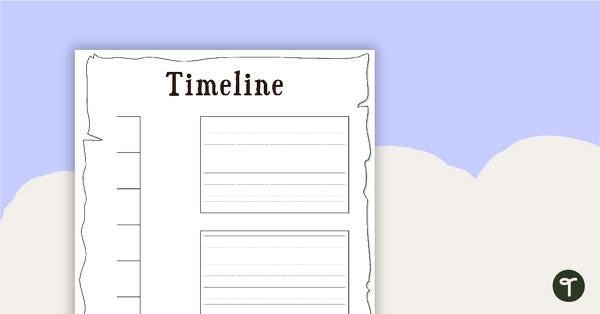
History Timeline Template
2 templates of a timeline to use during history lessons.
- Plus Plan
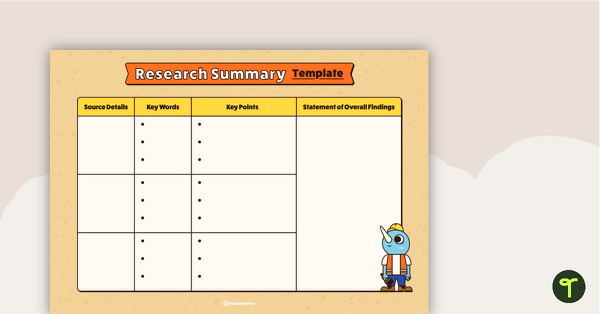
Research Summary Template
A template for students to use when compiling research notes.
- Plus Plan
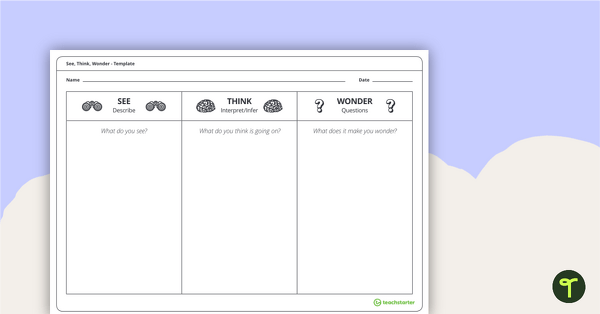
See, Think, Wonder Template
A See, Think, Wonder Template is useful in encouraging students to make careful observations and interpretations.
- Plus Plan
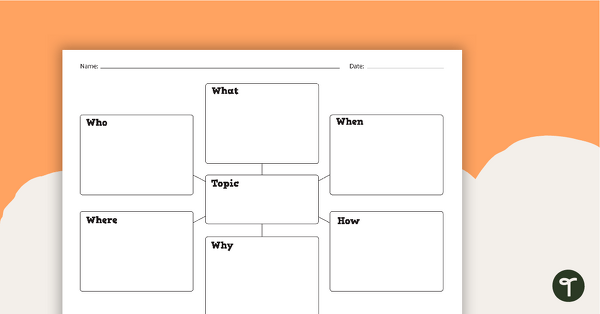
5 W's and 1 H Graphic Organiser (Version 2)
A blank 5 W’s and 1 H graphic organiser.
- Plus Plan
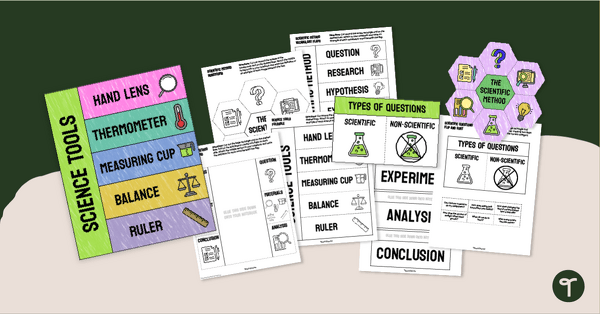
Scientific Method Graphic Organiser Templates - Foldables
Use a foldable Scientific Method Graphic Organiser to help your students organise their learning about the scientific process.
- Plus Plan
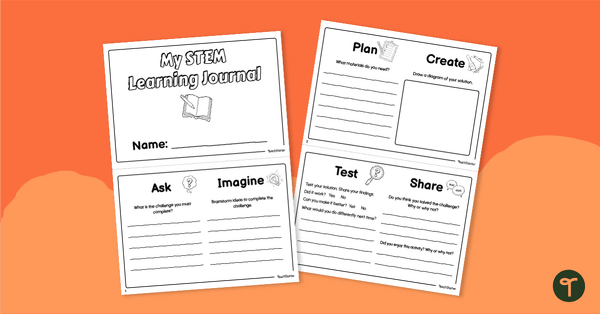
STEM Learning Journal - Experiment Notebook
Use this STEM Learning journal to organize data and learning with your students when completing STEM and STEAM activities.
- Plus Plan
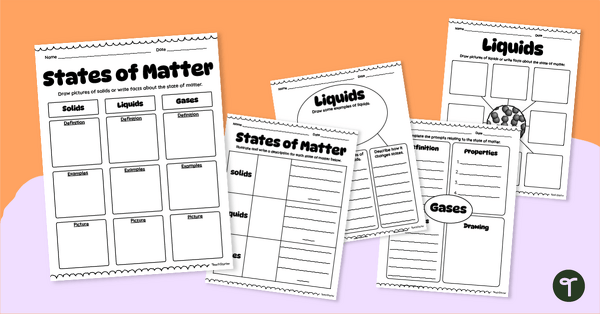
States of Matter Graphic Organiser Pack
Use our States of Matter graphic organisers to help your students record what they have learned about the three forms of matter.
- Plus Plan

Physical and Chemical Changes in Matter Foldables
Record your students' learning about physical. and chemical changes with a fun set of printable Interactive Notebook Templates.
- Free Plan
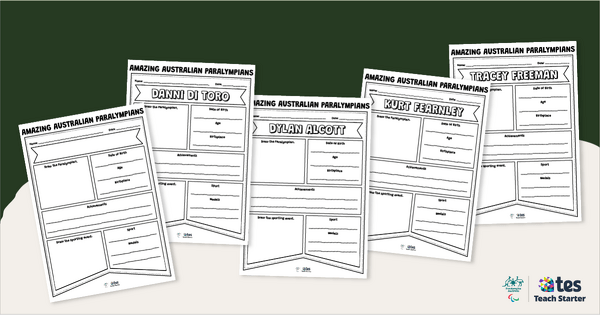
Australian Paralympic Athletes - Biography Banners
Bring the Paralympic Games to life with this set of Australian Paralympian Biography pennant templates.
- Free Plan
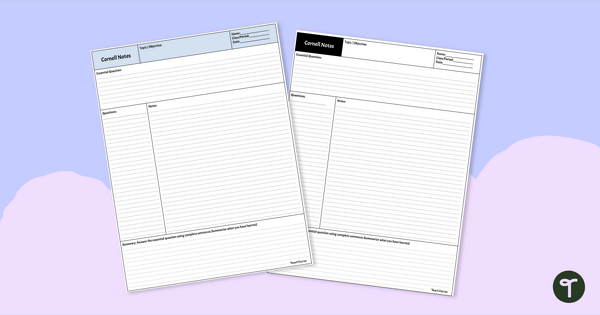
Cornell Notes Template
Help your students organize their notes with a free Cornell Notes Template.
- Plus Plan
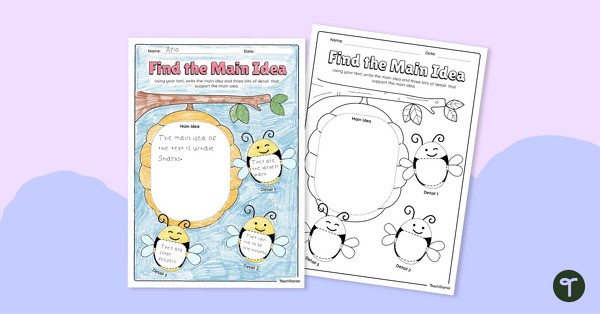
Finding the Main Idea Graphic Organiser - Beehive
A graphic organiser to help students work out the main idea and supporting detail of a text.
- Plus Plan
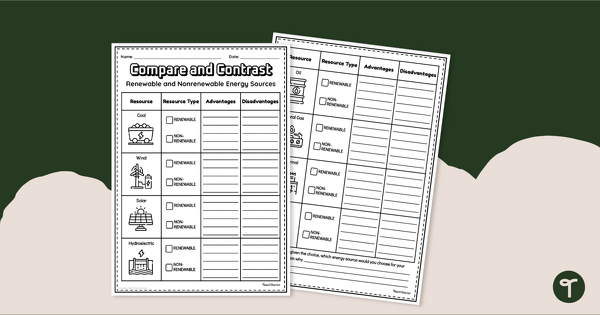
Comparing Energy Sources Worksheet & Graphic Organiser
Compare and contrast different types of renewable energy sources with a printable graphic organiser.
- Plus Plan
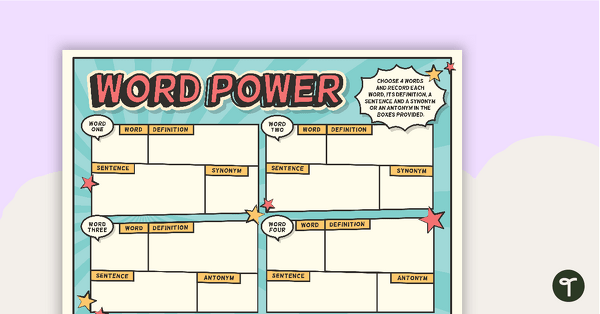
Word Power Vocabulary Worksheet
A comic book themed worksheet to use in the classroom when building vocabulary.
- Plus Plan
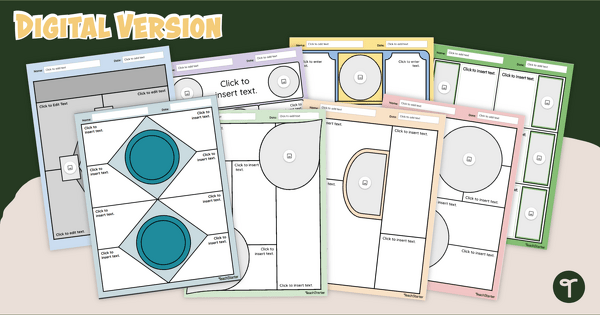
One-Pager Templates — Digital and Print
Display your students' learning on a variety of topics with printable and digital one-pager templates.
- Plus Plan
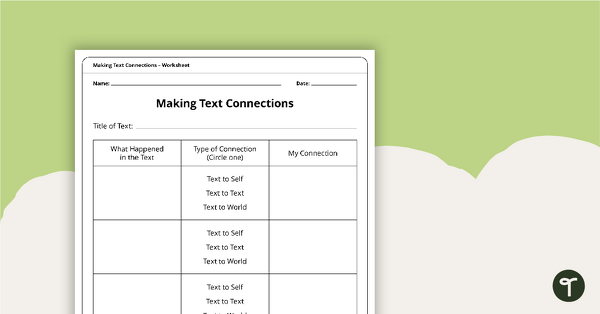
Making Text Connections Graphic Organiser (Years 3–6)
A graphic organiser to use with students when making connections with a text.
- Plus Plan
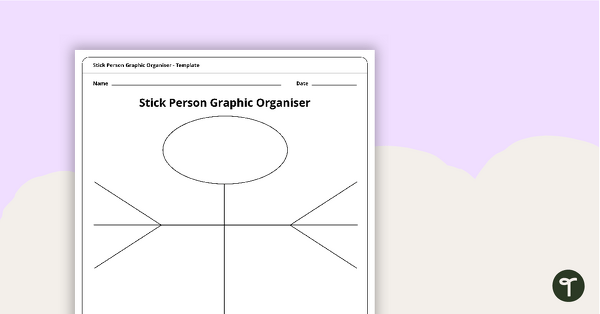
Stick Person Graphic Organiser
A simple and effective graphic organiser that can be used for a wide range of purposes including note taking, mind mapping and planning writing responses.
- Plus Plan
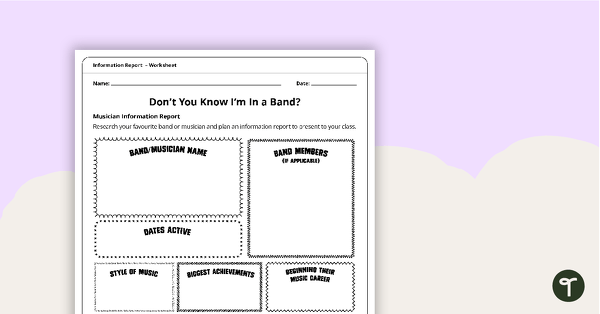
Musical Act Information Report Planner
An information report planning template focusing on a musical act.
- Plus Plan
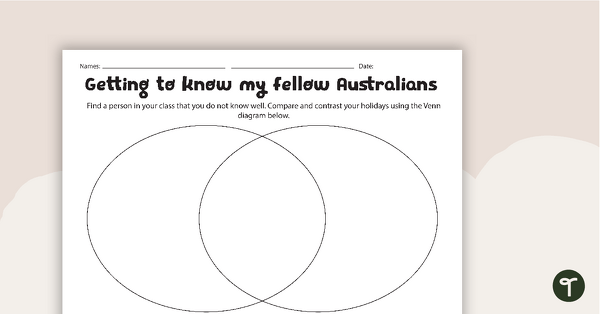
Getting to Know My Fellow Australians - Venn Diagram
An activity for students to compare their holiday experiences with a peer.
- Plus Plan
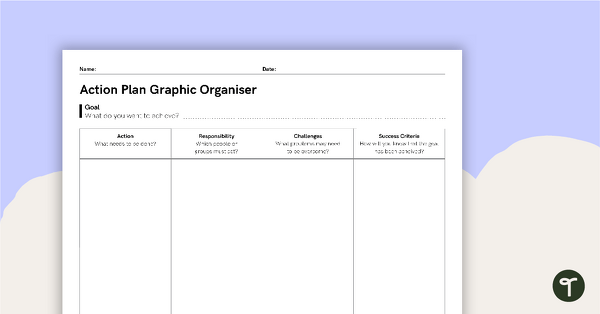
Action Plan Graphic Organiser
A blank action plan graphic organiser.
- Plus Plan
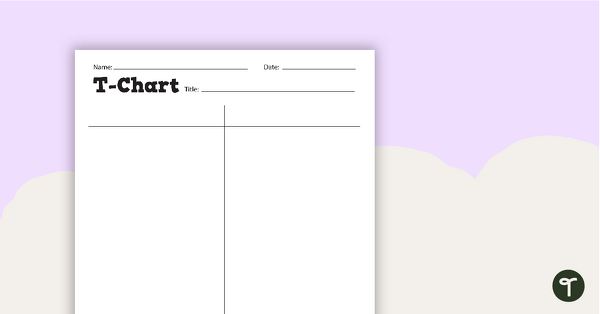
T-Chart Graphic Organiser
A blank T-chart graphic organiser.
- Plus Plan
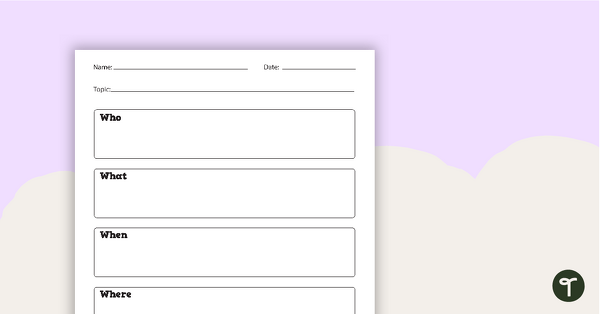
5 W's and 1 H Graphic Organiser
A blank 5 W's and 1 H graphic organiser.
- Plus Plan
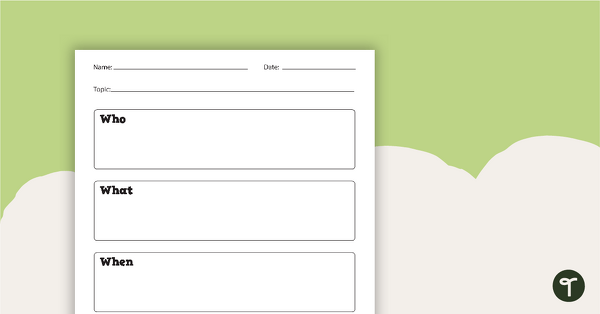
5 W's Graphic Organiser
A blank 5 W's graphic organiser.
- Plus Plan
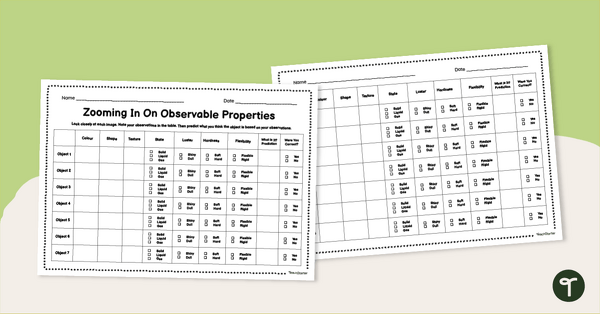
Zooming in On Matter and Properties of Matter Graphic Organiser
Use a Matter and Properties of Matter Graphic Organiser to explore and identify examples of matter in your upper-year science classes.
- Free Plan
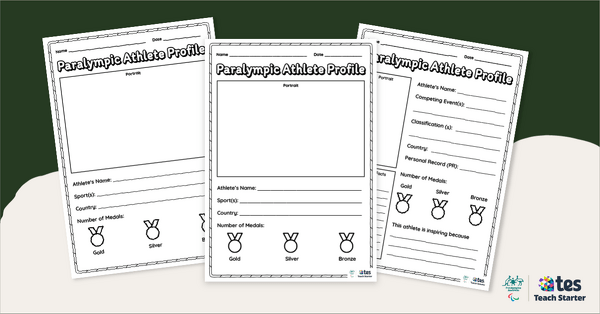
Paralympic Athlete Profile Template
Get your students excited about their favourite para-athletes with our Paralympic Athlete Profile Template.
- Plus Plan
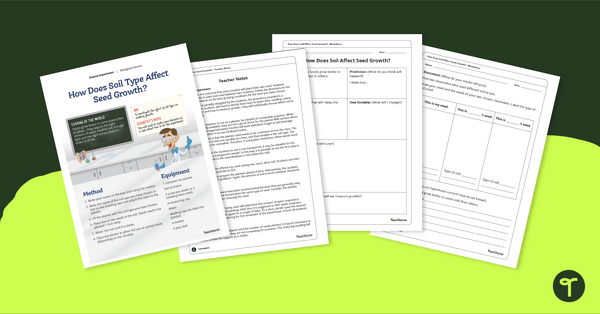
Science Experiment - How Does Soil Affect Seed Growth?
Explore the effect of soil type on growth and change of a seedling with a hands-on science experiment.
- Plus Plan
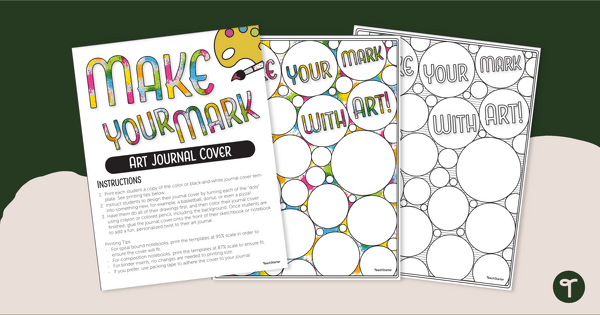
Make Your Mark! Dot Day Art Journal Cover
Encourage creativity and artistic expression by making an art journal with a custom Dot Day Art Journal Cover.
- Plus Plan

Amazing Innovators Note-Taking Organiser
Record and remember key facts and details about famous inventors with a printable graphic organiser.
- Plus Plan
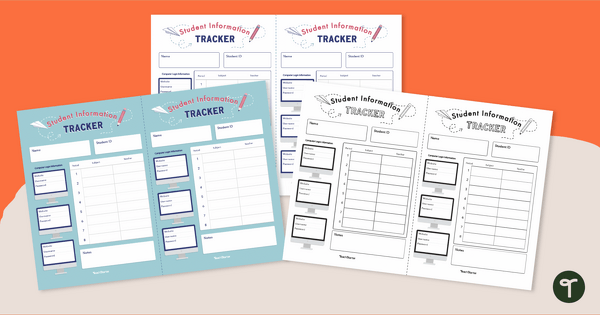
Student Information Tracker
Keep schedules, computer logins and other information organised with a printable student information sheet.
- Plus Plan
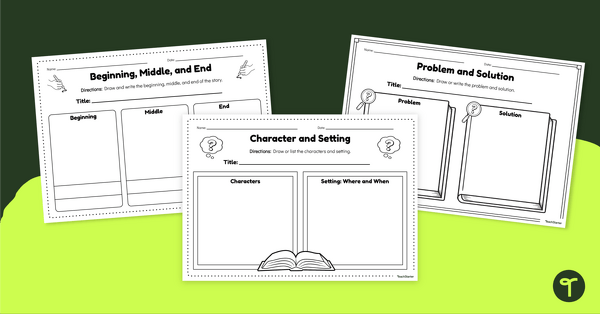
Narrative Elements Graphic Organisers – Landscape
Encourage your students to write and draw about various story elements with this set of differentiated graphic organisers.
- Plus Plan
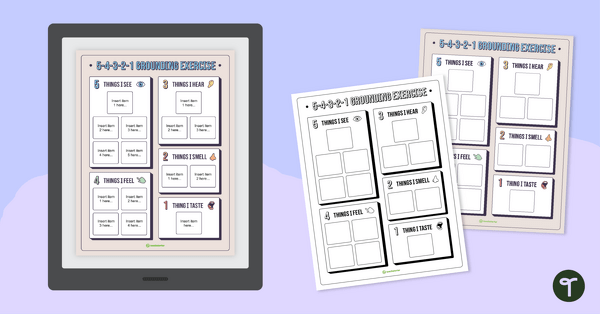
5-4-3-2-1 Grounding Exercise – Worksheet
De-escalate difficult situations with a printable grounding exercise.
- Plus Plan
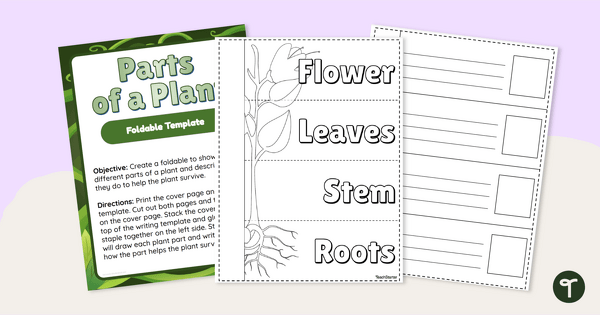
Parts of a Plant Foldable - Lift-the-Flap Graphic Organiser
Display learning about the parts of a plant with a fun “lift the flap” graphic organiser.
- Plus Plan
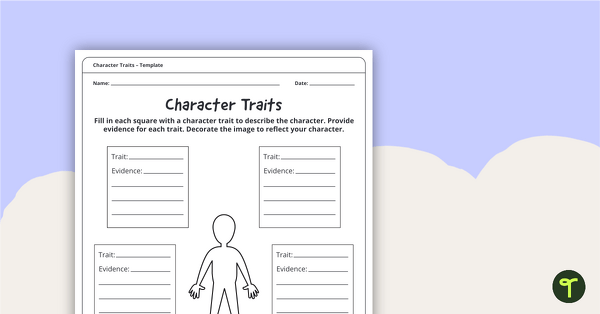
Character Traits Graphic Organiser
Describe the most notable mental and moral qualities of a real or fictional person.